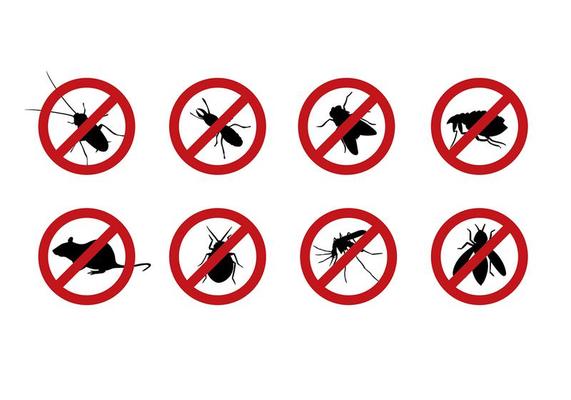Experienced A1 Exterminators Charlotte NC - Fast and Reputable Solutions
Experienced A1 Exterminators Charlotte NC - Fast and Reputable Solutions
Blog Article
Bed Pest Treatment Failure: Contrasting Chemical Vs. Non-Chemical Solutions
In the realm of parasite control, particularly when managing the consistent concern of bed pests, the option in between chemical and non-chemical treatment services can be an essential one. Both techniques supply unique advantages and downsides, influencing factors such as effectiveness, safety factors to consider, and overall expense. By analyzing the nuanced information of each approach, a more clear understanding of which course to seek in resolving a bed pest infestation can be obtained.
Efficiency of Chemical Treatments
Chemical therapies for bed pest infestations have been extensively acknowledged for their powerful and fast efficacy in eradicating these insects. When thinking about the effectiveness of chemical therapies, it is important to understand that they can give a thorough and fast option to a bed insect problem. Expert pest control specialists usually depend on insecticides to target bed insects at various stages of their life cycle, including eggs, grownups, and fairies. These chemicals generally function by interrupting the bed bugs' nerve system, resulting in paralysis and eventual fatality.
Additionally, chemical treatments have the advantage of supplying residual results, implying that they can proceed to get rid of bed insects also after the initial application. This residual action is especially valuable in combating any prospective re-infestations. Furthermore, the fast action of chemical treatments can bring alleviation to people facing extreme bed pest problems, allowing them to reclaim control of their home rapidly.
Safety Interest In Chemical Solutions
One vital aspect that requires mindful consideration when utilizing chemical options for bed pest therapy is ensuring the safety and security of residents and the setting. While chemical treatments can be effective in getting rid of bed pests, they might present threats otherwise taken care of effectively. Among the primary safety interest in chemical remedies is the possible damage they can cause to human health. Exposure to particular chemicals made use of in bed insect treatments can bring about respiratory problems, skin inflammation, or other damaging responses, particularly in individuals with pre-existing conditions or sensitivities. Additionally, improper application or dose of chemical pesticides can cause poisonous deposits remaining in the treated location, posturing long-lasting health risks to passengers.
Moreover, the environmental effect of chemical options is an additional substantial consideration. Some chemicals utilized in bed pest therapies may be damaging to beneficial insects, wild animals, and ecological communities if they seep right into the dirt or water supply. It is vital to use chemical treatments judiciously, complying with safety guidelines, and considering much less toxic choices to reduce these risks and ensure the effective and secure management of bed pest problems.
Advantages of Non-Chemical Methods
Considering the prospective safety concerns and environmental impact connected with chemical services for bed bug treatment, exploring non-chemical approaches offers an encouraging choice with several unique advantages. Non-chemical termite barrier treatments are eco friendly, as they do not add to air or water pollution, making them a lasting choice for bug control.
Furthermore, non-chemical remedies can be effective in targeting bed insects, including hard-to-reach locations where chemical therapies might not permeate. Methods such as heat treatment, vacuuming, steam cleansing, and mattress coverings offer comprehensive obliteration without using hazardous chemicals. Furthermore, non-chemical methods can be less turbulent, requiring very little prep work and permitting quicker reentry into treated areas. On the whole, choosing non-chemical bed insect therapy methods not just focuses on safety and security and environmental security but also guarantees efficient and extensive parasite control.
Limitations of Non-Chemical Treatments

Furthermore, non-chemical therapies often require numerous applications to achieve effective eradication. This can be lengthy and may not always assure complete removal of all bed pests and their eggs, particularly in hidden or hard-to-reach places.
Moreover, the success of non-chemical therapies heavily counts on appropriate application and thoroughness, which can be testing for people without expert competence. Poor application of non-chemical methods might result in insufficient elimination, resulting in relentless problems and the demand for additional treatments.
Therefore, while non-chemical therapies have their advantages, it is important to acknowledge these constraints and consider them when establishing the most effective method for managing bed insect problems.
Expense Contrast: Chemical Vs. Non-Chemical Options
Provided the constraints related to non-chemical treatments, an essential element to examine in the context of bed pest administration is the price contrast in between chemical and non-chemical choices. Chemical treatments commonly involve the application of insecticides by experts, which can range from $250 to $900 per room, relying on the extent of the invasion and the dimension of the area to be dealt with. On the other hand, non-chemical treatments like heat treatment or heavy steam can be much more pricey, with expenses varying from $1,000 to $6,000 for an entire home. While the preliminary expense of chemical therapies may appear lower, several treatments might be needed to totally remove the infestation, potentially enhancing the overall look these up price. On the other hand, non-chemical choices may offer a more sustainable and green option, although they can be cost-prohibitive for some individuals. Inevitably, when taking into consideration the price of bed insect therapy choices, it is essential to weigh the upfront expenses against the efficiency and lasting sustainability of the picked approach.
Conclusion

Considering the prospective safety and security problems and ecological impact connected with chemical solutions for bed pest treatment, discovering non-chemical techniques presents an encouraging alternative with a number of unique benefits.Offered the constraints linked with non-chemical therapies, an essential element to review in the context of bed pest management is the expense comparison in between chemical and non-chemical choices. In contrast, non-chemical treatments like warm therapy or heavy steam can be a lot more pricey, with costs varying from $1,000 to $6,000 for a whole home. While the initial cost of chemical therapies may seem lower, several treatments may be needed to fully get rid of the infestation, potentially boosting the total price.In final thought, when comparing chemical and non-chemical bed insect treatment options, it is crucial to think about performance, safety and security, advantages, limitations, and expense.
Report this page